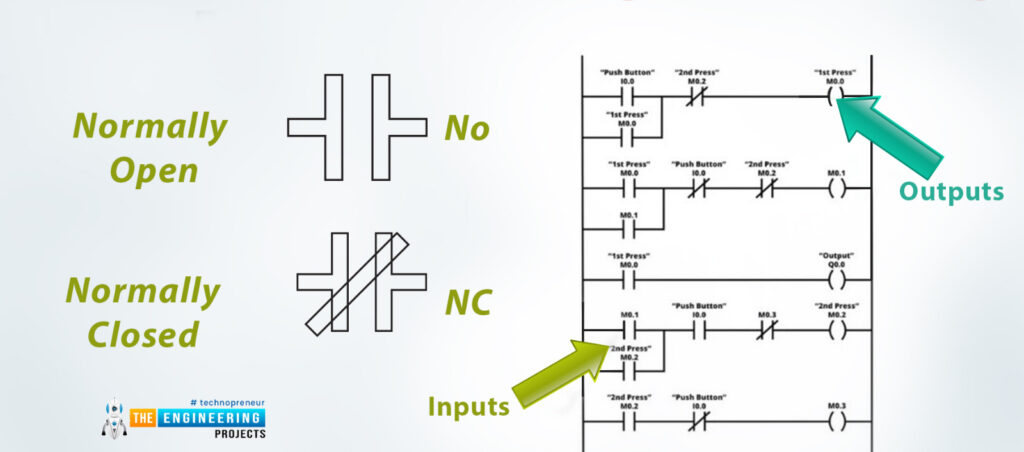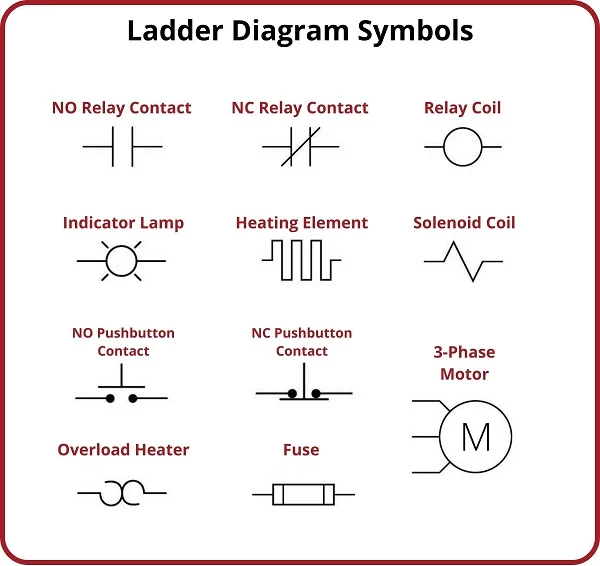
What is Ladder Logic?
The History
Richard E. Morley is credited for being the inventor of ladder logic. Morely invented the first Programmable Logic Controller in 1968. Morley’s invention was a significant innovation in industrial control systems, and it paved the way for the development of ladder logic. In the early days of ladder logic, programming involved hand-drawn diagrams on paper. These papers got fed into machines that converted the diagrams into machine code. Over time, ladder logic evolved to include more advanced programming functions.
As a Language
The fundamental building blocks of Ladder Logic are inputs, outputs, and logic gates. Inputs refer to the signals received from sensors or other devices. Outputs refer to the signals sent to actuators or other devices. Logic gates are the basic building blocks of digital circuits and perform logical operations on the inputs to produce the desired output.

The diagrams in Ladder Logic consist of horizontal “rungs” that represent the logical operations performed on the inputs, and vertical “rails” that represent the power supply and ground. The rungs stay connected by “contacts” and “coils”. Contacts represent the inputs while coils represent the outputs. Various symbols represent the logic gates. Some examples of these symbols are AND gates, OR gates, and NOT gates. These gates perform logical operations on the inputs.
Ladder Logic’s Advantage
One of the advantages of Ladder Logic is its simplicity and ease of use. The graphical representation of the program makes it easy to understand and maintain. Those with little or no programming experience can quickly learn it. This leads to significant time and cost savings for industrial automation and control systems. Additionally, the standardized symbols and syntax make it easy to share programs between different PLCs and programming software, further reducing development time and costs.
Another advantage of Ladder Logic is its ability to handle complex control functions. Ladder Logic includes advanced programming functions such as timers, counters, and math functions, allowing it to handle complex control functions in industrial processes. This flexibility makes it a powerful programming language for industrial automation and control systems. This is due to customizability to suit specific control requirements.
The Future of Ladder Logic
Ladder Logic is in the development of smarter and more sophisticated industrial control systems. The Internet of Things (IoT) and Industry 4.0 are driving the development of intelligent factories and industrial processes. Ladder Logic can handle the advanced programming functions required for these systems. For example, Ladder Logic can be implemented into program predictive maintenance systems. This system uses sensors and data analysis to predict when equipment will fail and schedule maintenance accordingly.
Another potential future use of Ladder Logic is in the development of more energy-efficient industrial control systems. As sustainability and energy efficiency become increasingly important, Ladder Logic can be used in program systems that optimize energy usage and reduce waste. It can control HVAC systems, lighting systems, and other building automation systems to reduce energy usage and improve efficiency.
The future of ladder logic has been a topic of debate for quite some time. While some are optimistic about it still having a place in the industry, there are others who think that it will eventually go in the way of languages already forgotten. Ladder logic’s story is one that started a long time ago and is continuing to unfold.
Updated on March 7, 2023 by Ken Cheng